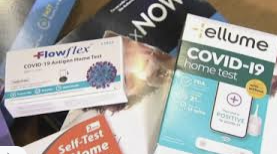 The US Food and Drug Administration (FDA) is alerting people there is a potential for harm if FDA authorized at-home COVID-19 tests are not used according to the manufacturer’s test instructions.
The US Food and Drug Administration (FDA) is alerting people there is a potential for harm if FDA authorized at-home COVID-19 tests are not used according to the manufacturer’s test instructions.
The FDA is also reminding people to keep the tests out of reach from children and pets.
FDA authorized at-home COVID-19 tests have become an important and convenient tool that people can use to check if they or a family member are currently infected with SARS-CoV-2, the virus that causes COVID-19. FDA authorized at-home COVID-19 tests are safe to use when following the test’s step-by-step instructions.
However, incorrect use of FDA authorized at-home COVID-19 tests can cause harm if, for example, the liquid solutions in the test touch a person’s skin or eyes or if the parts of the test such as small vials containing the liquid solutions are swallowed. The liquid solution in some tests may contain chemicals like sodium azide, which may cause harm if swallowed or if it comes in contact with the skin, nose, mouth or eyes. The FDA is providing recommendations to promote the safe use of at-home tests.
Recommendations include:
• Keep all parts of at-home COVID-19 test kits out of reach from children and pets before and after use.
• Store the at-home COVID-19 test in its box until you are ready to use it.
• Follow the manufacturer’s step by step test instructions exactly.
• Read the warning, precautions and safety information in the test instructions for a description of chemical ingredients including recommendations for safe handling and what to do if they accidentally touch your skin or eyes.
• Keep the liquid solution away from the skin, nose, mouth and eyes. Do not swallow the liquid solution.
• Use only the swab in the test kit to collect a nasal sample.
After you perform the test:
• Follow all test instructions for how to throw away the used test parts.
• Wash your hands thoroughly with soap and water.
Get medical help right away by contacting your local poison control or healthcare provider if:
• Skin or eye irritation does not go away after exposure.
• A person or animal swallows the liquid solution.




Facebook Comments